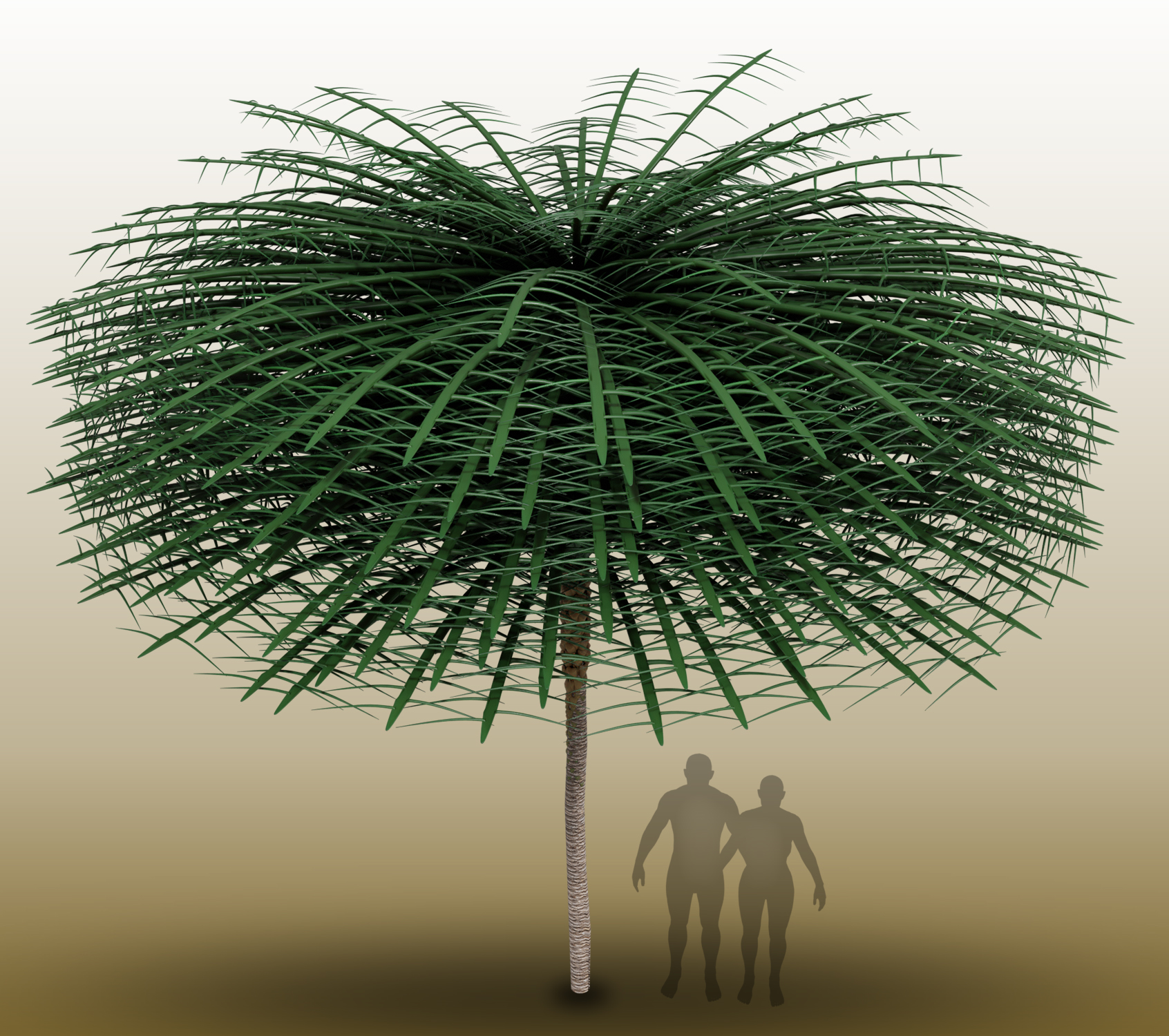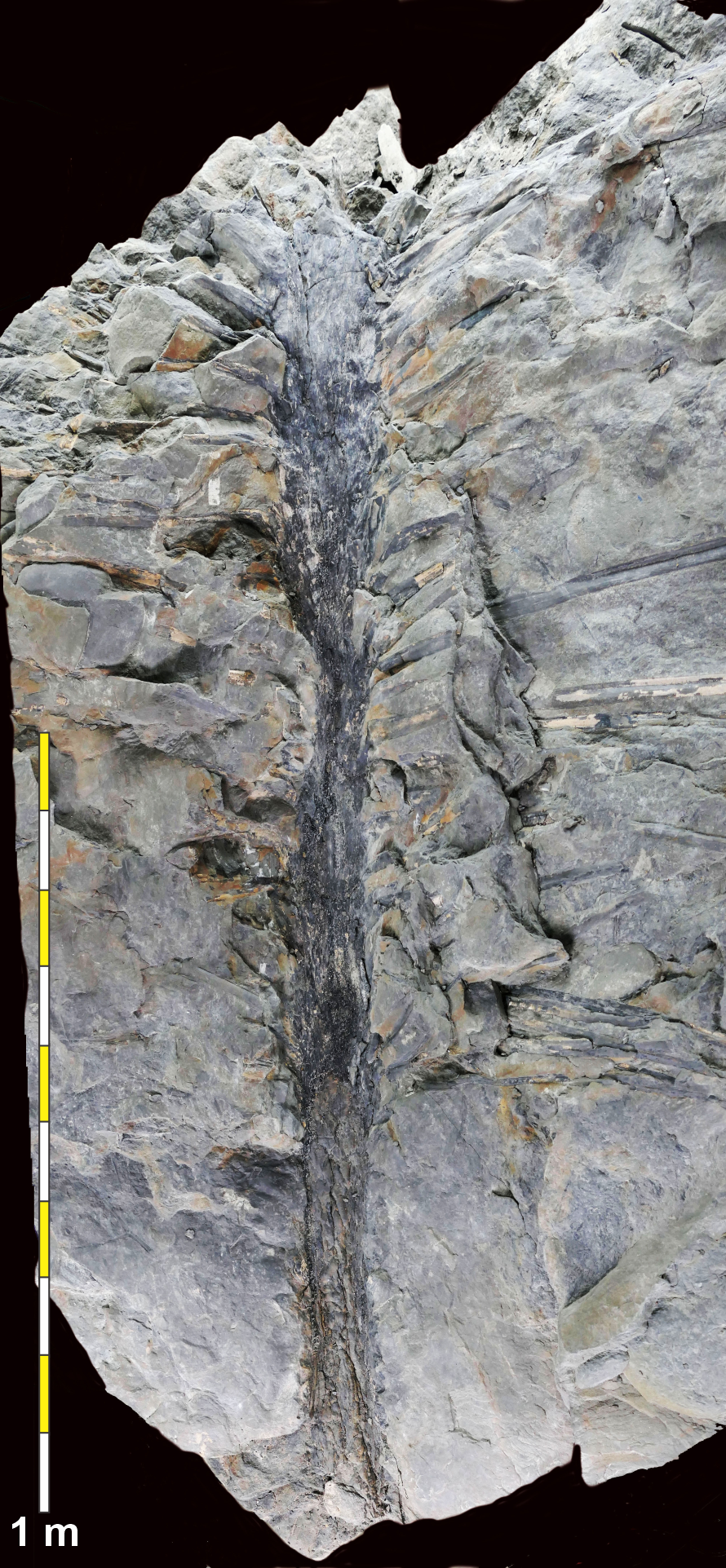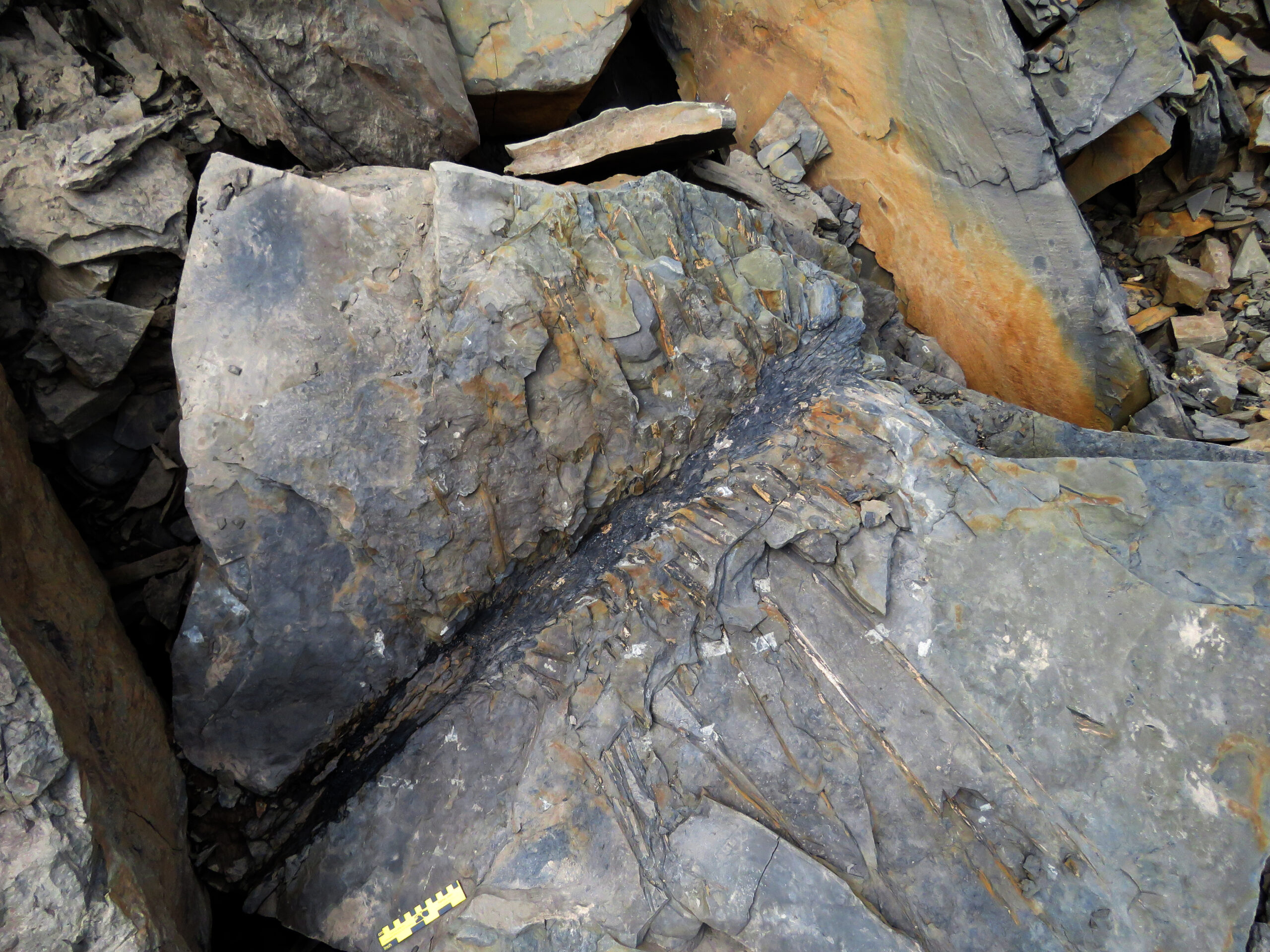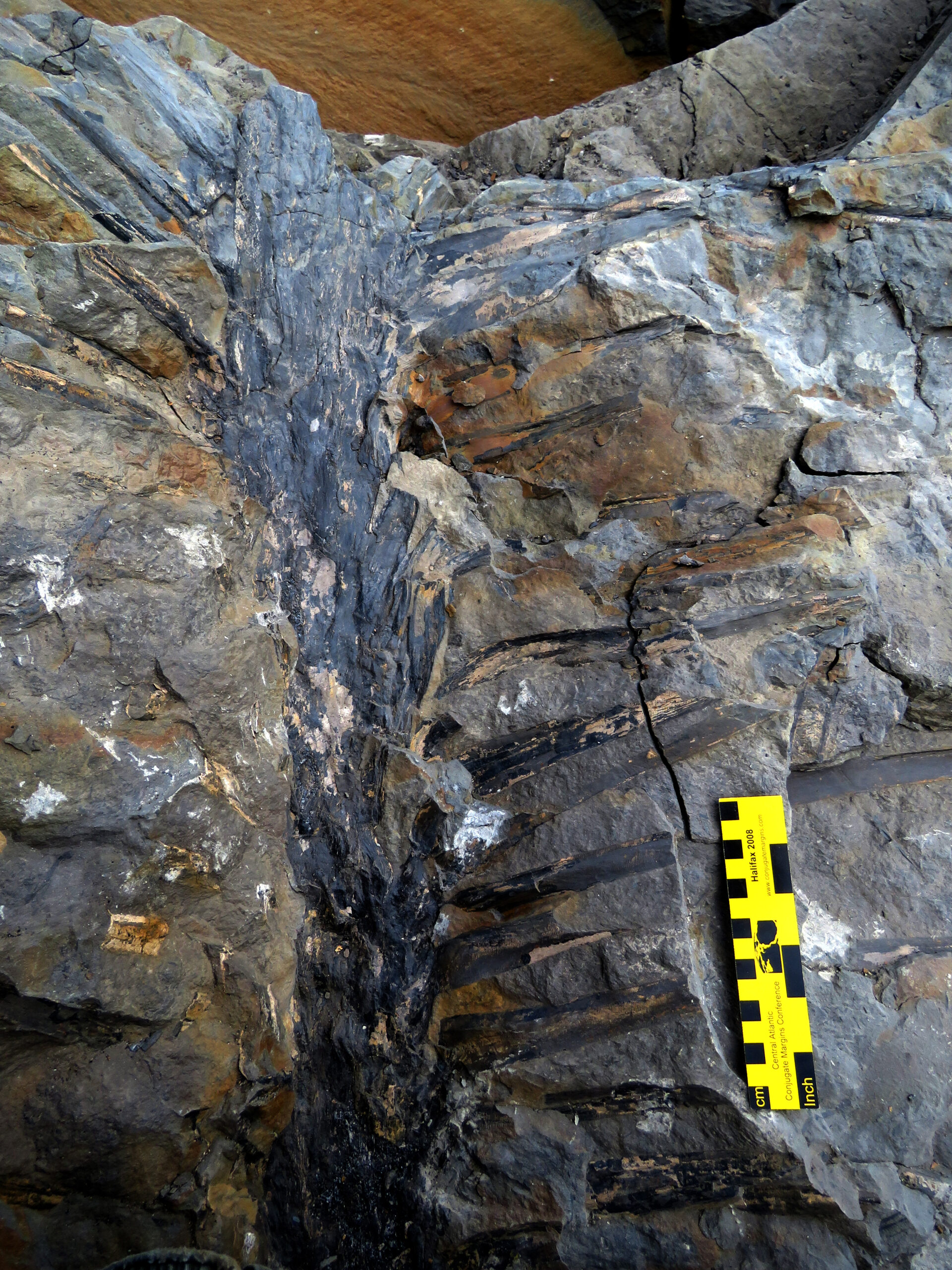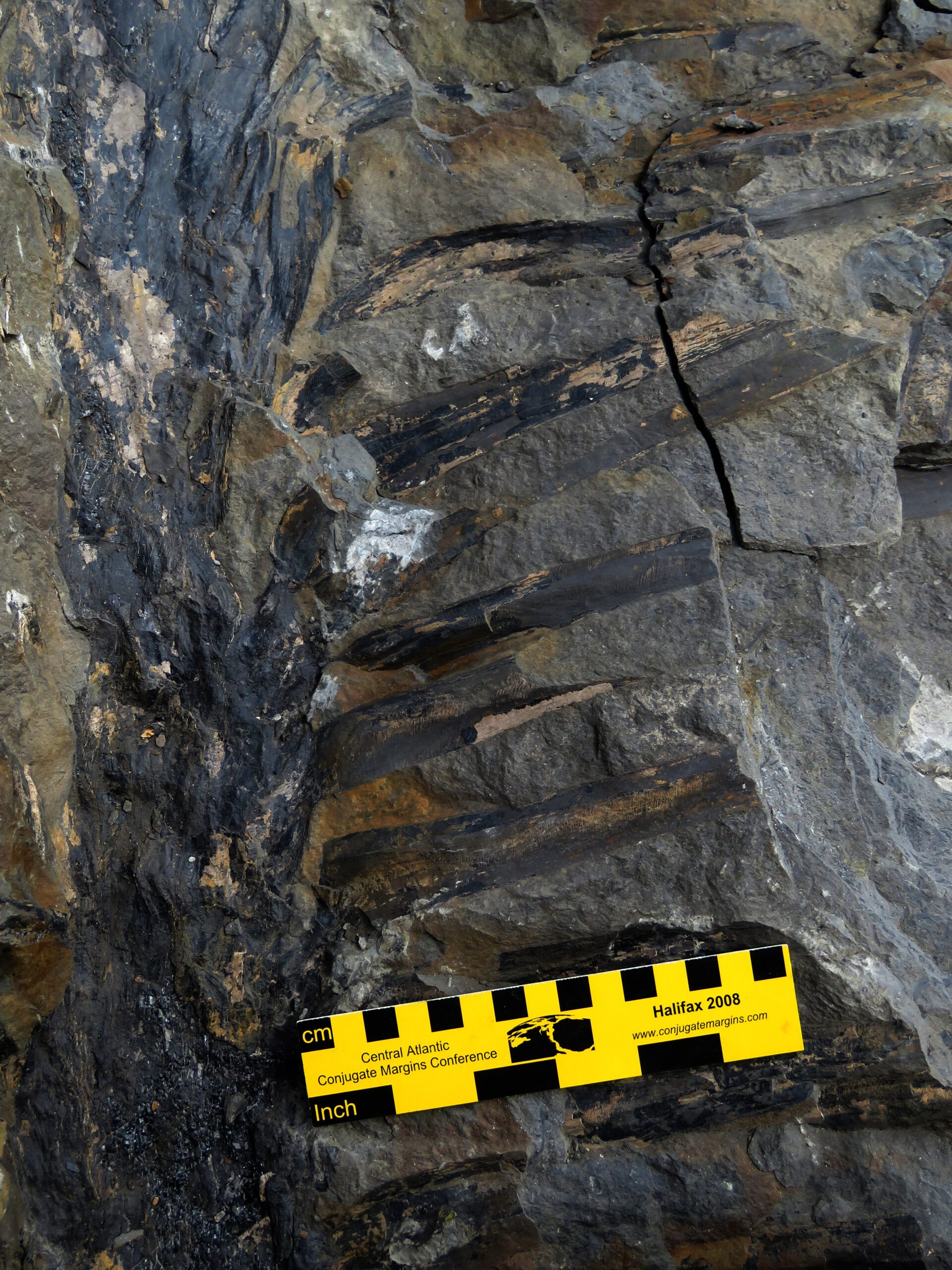When people think of the Carboniferous Period (about 360–300 million years ago), they often imagine tropical swamps filled with giant insects, huge ferns, and some of the first amphibians venturing onto land. During this time, New Brunswick sat near the equator, with hot, humid weather and no such thing as snow days!
The first half of the Carboniferous remains a bit of a mystery. We know it was when amphibians began crawling out of the water and slowly evolving into reptiles—the group that would eventually give rise to dinosaurs, birds, crocodiles, and even mammals. But fossil sites from this early period are rare, so we still know very little about the forests and creatures that lived there.
That’s what makes the rocks near Norton so important. They’re one of the few places in the world where scientists can study fossils from early land environments. Long ago, southern New Brunswick was covered by large lakes surrounded by dense, swampy forests. But these forests didn’t look like today’s. Picture towering tree-sized ferns and thick stands of giant club mosses called Lepidodendropsis, which had snaky, patterned bark and puffy crowns that looked like green pom-poms.
In 2017, after new excavations in a local quarry, researchers from the New Brunswick Museum uncovered something remarkable: a brand-new species of fossil tree. Most ancient plants break apart when they die, making it rare to find anything more than fragments. But this tree was preserved in 3D, with its compound leaves still attached to the stem—just as it was in life!
The tree was named Sanfordiacaulis densifolia—Sanfordiacaulis – for the local quarry owner, and – densifolia for its dense, spiraling crown of leaves. Though it only grew a few metres tall, its leafy canopy could stretch up to 5–6 metres wide! Scientists think Sanfordiacaulis may have been one of the first trees to grow in the “middle layer” of a forest—and that its shape was an evolutionary experiment that hasn’t been seen again since.
But how did this unusual tree get preserved in such amazing detail?
The quarry where it was found contains rocks from an ancient lake, not a swamp or river. Layers of sandstone there are filled with fossil plants, usually preserved as broken stems—sometimes with leaves still attached. But one clue stands out: the sandstone shows patterns called seismites, which form when earthquakes shake soft sediment.
Millions of years ago, powerful earthquakes—caused by active fault lines in what is now southern New Brunswick—likely triggered underwater landslides that swept trees from the shoreline into the depths of the lake. Down at the lake bottom, where the water was still and low in oxygen, the trees were rapidly buried in mud. That helped preserve their structure in three dimensions—almost exactly as they were in life.
Sanfordiacaulis quickly drew media attention for its whimsical look, with many comparing it to the fluffy Truffula trees from Dr. Seuss’s The Lorax. The comparison was so striking, the fossil even earned its own Wikipedia page!




